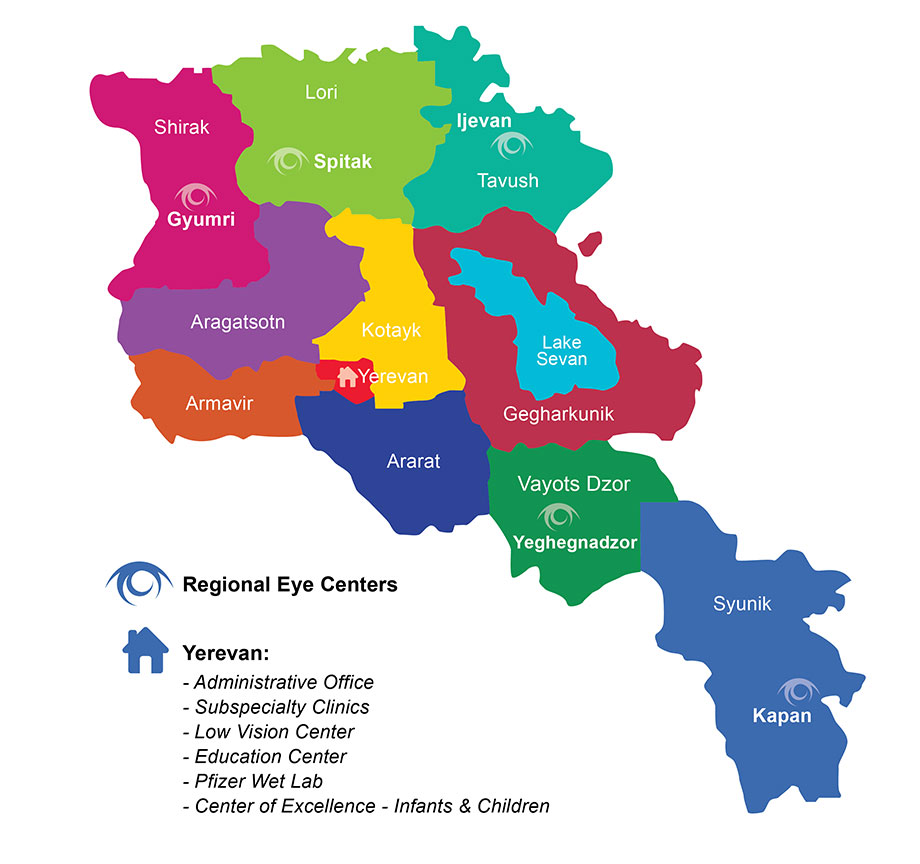What is Macular Degeneration?

Age-related macular degeneration (AMD) is a disease that blurs the sharp, central vision you need for “straight-ahead” activities such as reading, sewing, and driving. AMD affects the macula, the part of the eye that allows you to see fine detail but preserves the peripheral vision. AMD causes no pain. In some cases, AMD advances so slowly that people notice little change in their vision. In others, the disease progresses faster and may lead to a loss of vision in both eyes.
Where is the macula?
The macula is located in the center of the retina, the light-sensitive tissue at the back of the eye. The retina instantly converts light, or an image, into electrical impulses. The retina then sends these impulses, or nerve signals, to the brain. The macula allows us to appreciate detail and perform tasks that require sharp vision such as reading.
Are there different forms of AMD?
AMD occurs in two forms: wet and dry.
Wet AMD
Wet AMD occurs when abnormal blood vessels behind the retina start to grow under the macula. These new blood vessels tend to be very fragile and often leak blood and fluid. The blood and fluid raise the macula from its normal place at the back of the eye. Damage to the macula occurs rapidly. With wet AMD, loss of central vision is severe and can occur quickly. An early warning symptom of wet AMD is that straight lines appear wavy.
Dry AMD
Dry AMD occurs when the light-sensitive cells in the macula slowly break down, gradually blurring central vision in the affected eye. As dry AMD gets worse, you may see a blurred spot in the center of your vision. Over time central vision in the affected eye can be lost gradually. With dry AMD you may have difficulty recognizing faces or may need more light for reading and other tasks. Dry AMD generally affects both eyes, but vision can be lost in one eye while the other eye seems unaffected.
If you have vision loss from dry AMD in one eye only, you may not notice any changes in your overall vision. With the other eye seeing clearly, you still can drive, read, and see fine details. You may notice changes in your vision only if AMD affects both eyes.
Which is more common–the dry form or the wet form?
The dry form is much more common. More than 85 percent of all people with intermediate and advanced AMD combined have the dry form. Almost all vision loss comes from advanced AMD, the wet form leads to significantly more vision loss than the dry form.
Can the dry form turn into the wet form?
Yes. All people who have the wet form had the dry form first. The dry form can advance and cause vision loss without turning into the wet form. The dry form also can suddenly turn into the wet form, even during early stage AMD. There is no way to tell if or when the dry form will turn into the wet form.
Who is at risk for AMD?
AMD can occur during middle age. The risk increases with aging. Other risk factors include:
- Smoking.
- Obesity – Research studies suggest a link between obesity and the progression of AMD to advanced AMD.
- Race – Caucasians are much more likely to lose vision from AMD.
- Family history – People with a family history of AMD are at higher risk of getting the disease.
- Gender – Women appear to be at a greater risk than men.
How is AMD detected?
AMD is detected during a comprehensive eye exam that includes:
- Visual acuity test – This eye chart test measures how well you see at various distances.
- Dilated eye exam – Drops may be placed in your eyes to dilate the pupils. After which instrument is used to examine your retina and optic nerve.
What is an Amsler grid?
During an eye exam, you may be asked to look at an Amsler grid. The pattern of the grid resembles a checkerboard. You will cover one eye and stare at a black dot in the center of the grid. While staring at the dot, you may notice that the straight lines in the pattern appear wavy. You may notice that some of the lines are missing. These may be signs of AMD.
How is dry AMD treated?
Treatment can delay and possibly prevent AMD from progressing to the advanced stage, in which vision loss occurs. Studies have found that taking a specific high-dose formulation of antioxidants vitamin C and E, beta carotene and zinc significantly reduces the risk of advanced AMD and its associated vision loss.
How is wet AMD treated?
If you have dry AMD, you should have a comprehensive dilated eye exam at least once a year. Because dry AMD can turn into wet AMD at any time, you should get an Amsler grid from your eye care professional. Use the grid every day to evaluate your vision for signs of wet AMD. This quick test works best for people who still have good central vision. Check each eye separately. Cover one eye and look at the grid. Then cover your other eye and look at the grid. If you detect any changes in the appearance of this grid or in your everyday vision while reading the newspaper or watching television, get a comprehensive dilated eye exam.
If you have wet AMD and your doctor advises treatment, do not wait. After laser treatment you will need frequent eye exams to detect any recurrence of leaking blood vessels. Studies show that people who smoke have a greater risk of recurrence than those who don’t. Wet AMD is treated with lasers, which destroy the leaky blood vessels. Treatment may slow the rate of vision decline or stop further loss of vision, but there is no cure.
Can my lifestyle make a difference?
Your lifestyle can play a role in reducing your risk of developing AMD.
- Eat a healthy diet high in green leafy vegetables and fish
- Don’t smoke
- Maintain normal blood pressure
- Watch your weight
- Exercise







